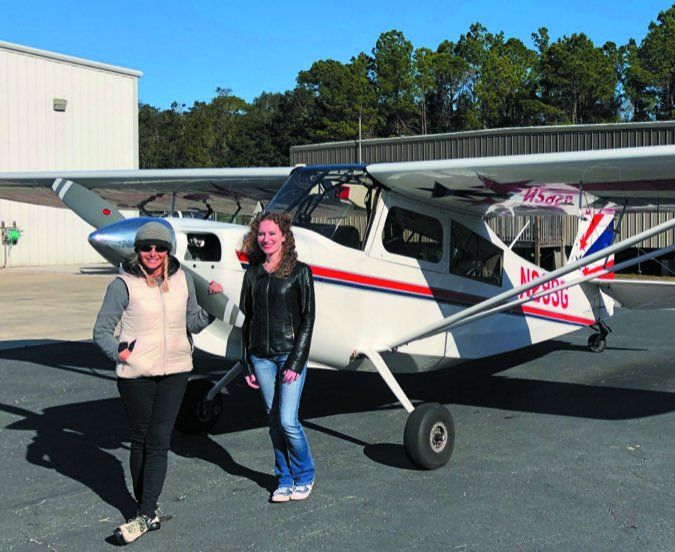I’m bored!
Admit it. You’ve made the statement loud and clear on more than one of those flights where you are following the magenta line in good weather and waiting for your destination to appear over the horizon. Sure, every once in a while, you’ll do a steep turn or wander off course a bit to look at something interesting-but, deep inside, you know that’s not enough. You live in the third dimension-there’s got to be more to getting from one place to another in an airplane than droning along waiting . . . and waiting. Flying is supposed to be fun.
Why not roll the airplane? Or loop it? Or fly upside down for a while? Anything to break up the monotony.
Well, first of all, you’re in a normal category airplane and you’re smart enough not to do something as incredibly stupid as aerobatics in an airplane that’s not built for them.
And second of all . . . maybe there is no second at all. You fly most of your trips by yourself, right? Why not own an airplane that you can use to go places and do some akro on the way? And, what better way to enjoy a gorgeous evening than a few loops and rolls as the sun heads for the horizon? That sure beats yet another session of touch and goes in the pattern.
The Market
A we researched this article, we were pleasantly surprised to find that during the heady aviation days of the 1960s and 70s, aircraft manufacturers spent the money to certify a wide variety of airplanes in the acrobatic category-capable of withstanding six positive and three negative Gs. There is a mix of two-place airplanes with power ranging from modest to Yeah Baby as we’ll as two four-place “family” airplanes.
From the standpoint of space, we’re limiting this article to production airplanes, while pointing out that every aerobatic instructor and pilot we interviewed spoke highly of the Van’s RV line of homebuilts for the ability to smoke along in cruise and nicely fly what interviewes referred to as “gentleman’s” and “lady’s” aerobatics.
Cautions
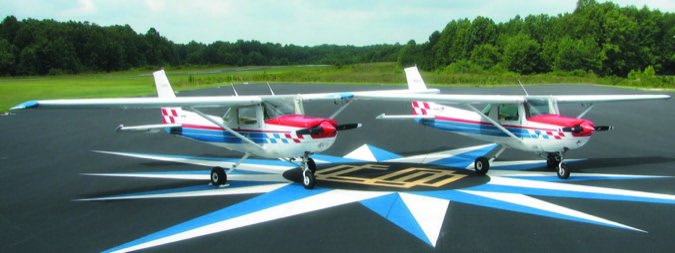
The unanimous consensus among those we interviewed for this article is that every aerobatic airplane they have flown has blown through redline more than once and otherwise been overstressed by student screwups-despite the instructor’s best efforts. (It’s also why they are adamant against doing akro in normal category airplanes.)
That means, in our firm opinion, that anyone considering purchase of an aerobatic airplane have a careful prebuy examination performed by someone who knows the type. We also think that the inspection should be approached with the mindset that the airplane has been overstressed (and tailwheel airplanes groundlooped at least once) and the examiner is looking to find out what the effect has been, whether repairs are (or were) needed and whether repairs were done properly.
As part of the prebuy, carefully check to see if there are any STCs or mods to the airplane that disqualify it for aerobatic flight. That could include an engine or STOL mod. Further, some aerobatic airplanes are the subject of requirements for mods to maintain their aerobatic certification.
That being said, there are a lot of aerobatic airplanes in beautiful condition out there-we’ve talked with some happy recent buyers. We recommend a patient search.
As a final preliminary remark, you’re going to need parachutes unless you are only going to do aerobatics solo and are nuts. Figure in the cost of chutes in your airplane search as we’ll as their weight when looking at useful load of the aircraft you’re considering.
Cessna Aerobat

The Rodney Dangerfield of aerobatic airplanes, but we, frankly, love it. For the 1970 model year, Cessna made the already strong 150 almost bulletproof by adding stringers, nearly doubling the number of rivets and using wing struts from the 182.
Power was not increased when the structural changes were made so the complaint is that Aerobat pilots spend half of their lives climbing for altitude. That’s not entirely true, but because one has to dive for the entry speed for most maneuvers, Aerobat pilots learn energy management early on.
With well-harmonized controls, Aerobats will do lovely, positive-G aerobatics, but their pilots have to work to make it happen. For example, rolls require that the control yoke be turned completely upside down to get full aileron deflection.
Dr. Catherine Cavagnaro uses an Aerobat in her Ace Aerobatic school in Sewanee, Tennessee, for aerobatic, spin and upset recovery training. She does so because the yoke and side-by-side seating give a more realistic depiction of what is involved in recovery from an unusual attitude in most airplanes.
Dr. Cavagnaro and others told us that the Aerobat particularly shines in snap rolls and spins-although, as with all aerobatic airplanes, entering a snap roll too fast is likely to result in structural damage. The wing sweep that begins just outboard of the wing struts helps cause the Aerobat to enter snaps and spins-and recover-more crisply than the Citabria and Decathlon.
We used VRef as guidance for prices for this article. For the Aerobat A150K-M, prices ranged from a low of $20,000 to a high of $27,000-assuming an airframe in good shape with a mid-time engine and decent avionics. Overall, Aerobats commanded about a $5000 premium over 150s of the same year. For the A152 “no letter” through the B model, prices started at $34,000 and topped out at $45,000 with a $5000 to $7000 premium over straight 152s.
Owners advised us that an Aerobat must have the rudder stop AD complied with to maintain their certification. We also learned from the Cessna 150/152 Club that parts are getting hard to find, notably wing struts.
During a prebuy exam, check for corrosion as we’ll as whether the vertical stabilizer is indeed vertical. We heard some unpleasant stories of bent vertical stabilizers and twisted empennages, probably due to snap rolls entered too fast.
Interior refurbishment costs more than a stock 150/152 because, as with the Citabria/Decathlon, the seat cushions are separate from the seats so that they can be easily removed when wearing parachutes.
One owner told us that he was able to find an Aerobat that had never been a flight school airplane, so it wasn’t abused. However, it had been parked outside in the Southern California sun for 15 years so that its paint had faded-making it an “Uglybat.”
Citabria
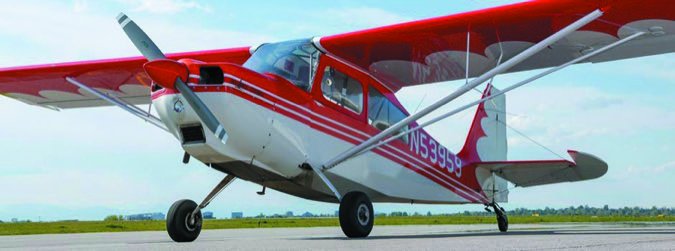
Trying to keep up with the number of different Citabria models that have been offered over the years is more than a small challenge. Boiled down to the essence, all models start with the number “7” and are followed by two or three letters.
The lowest-power Citabrias of which we are aware have 100 HP, while the highest have 180 HP up front (there are only few 180-HP Citabrias in the field). All are fabric-covered, and have fixed-pitch props; some have wing flaps, the others don’t and all are aerobatic, have tandem seating, are soloed from the front and use a stick rather than a yoke. The 7KCAB model has an inverted fuel and oil system.
Flying from the front seat gives the Citabria surprisingly good visibility for a tailwheel bird. From a ground handling perspective, we much prefer the models with toe brakes over the early versions with heel brakes.
The flight controls are not well-harmonized. The elevators and rudder are “just right,” while the ailerons are way too heavy and the roll rate slow. We consider spades, which look like small shovels and are attached to the ailerons to reduce control forces, to be a nearly essential mod.
It takes work and finesse to do precise aerobatics in a Citabria. However, as with the Cessna Aerobat, learning in one means that when you step into a more capable akro machine that you’ll be amazed how easy it is to nail the maneuvers you’ve struggled to master.
Citabria cruise speeds are proportional to engine size. The big engine ones will cruise 110 knots on 7 GPH. We consider the more powerful Citabrias to be very good backcountry airplanes-making them the utility infielders of general aviation.
The big shortcoming of many Citabrias (and Decathlons) is useful load. With two beefy Americans and parachutes, it may not be possible to carry more than a gallon or two of avgas. In the aerobatic world we simply are not willing to fly over gross.
We strongly recommend that adequate useful load be high on your list of must-haves when searching for an akro cruiser.
Prebuy considerations are the usual concerns about corrosion and structural integrity for an airplane that has probably been overstressed at least once. Because the airplanes are fabric covered, we are of the opinion that their hangaring is a must.
Prices for Citabrias are all over the chart. In general, the older, lower-powered ones are the least expensive, with prices starting as low as $19,000. Prices climb steadily with power and youth, with new production model prices in the $170,000 range.
Decathlon
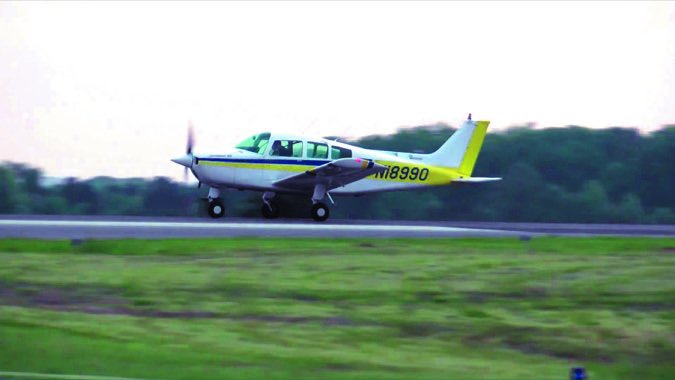
In the early 1970s the 150-HP 8KCAB Decathlon emerged from the chrysalis of the 150-HP 7KCAB Citabria with the same fuselage and powerplant, but a shorter, symmetrical airfoil wing and a constant-speed prop. Stressed for +6 and -5 Gs, the Decathlon proved to be a big step up in aerobatic capability over the Citabria although it still had the lousy, heavy ailerons of the marque. In 1980 power was boosted to 180 HP in the Super Decathlon, but useful load suffered. A few years ago American Champion came out with the 210-HP Extreme Decathlon with a number of modifications, including far lighter and delightfully effective ailerons.
Three-time national aerobatic champion Patty Wagstaff owns a Super Decathlon she uses for aerobatic instruction and as a personal traveling airplane. She told us that she can rely on the airplane to do a solid 120 knots for four hours and that she has flown hers from Anchorage to the lower 48. She recommended a careful prebuy as the airplanes can be subject to abuse.
Wagstaff also noted that wood-spar Citabrias and Decathlons are subject to an AD requiring repetitive inspection and replacement with aluminum wings if there is damage-a fix that runs in the $40,000 range.
While the 150-HP Decathlon doesn’t have the vertical ability of the higher-horsepower versions, we consider it an excellent performer and we’ve happily used one for solo travel. Plus, with everything tied down, it’s a blast to break up the en route time by periodically pointing the wheels at the sky.
Our review of prices showed a range from $24,000 for an early 150-HP version through $289,900 for a brand-new Extreme.
Aerobatic Musketeer
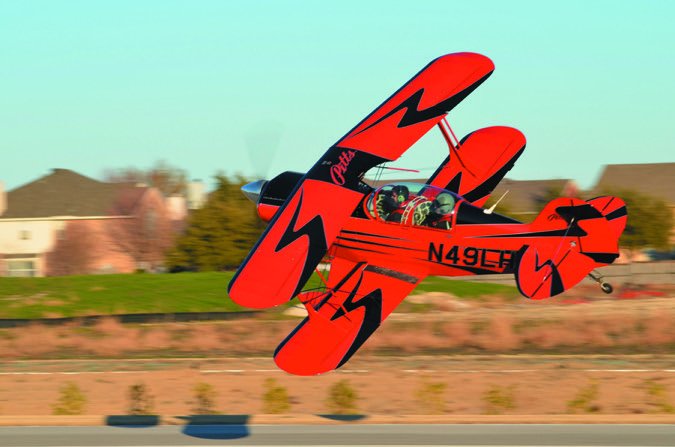
For some two years of the production of its entry-level four-place airplane, the Musketeer/Sierra, Beech built an aerobatic version. The 1969 B23, now valued at $21,500 and the 1970 C23, valued at $22,500, are aerobatic with only two of the four seats occupied.
The Musketeer series has long had a reputation for a large, comfortable cabin, excellent handling and painfully slow cruise speeds. Yet, with a 180-HP engine, it does most acceptable aerobatics without requiring periods of climbing following maneuvers.
The late William Kershner, a well-known aviation writer, thought so we’ll of the aerobatic Musketeer that used one to start the Ace Aerobatic School where he gave, and wrote about, spin and aerobatic training.
Aerobatic Bonanza
For three years Beech made an aerobatic version of the 33 series Bonanza for Lufthansa and the Mexican air force. All but one of the E33C and F33C Bonanzas were exported. Over the years many of them were bought by private owners in the States. In researching this article we learned that some of them have been modified with inverted fuel and oil systems, making them very capable aerobatic cruisers.
To maintain aerobatic certification each must have had Beech’s retrofit aerobatic kit installed, beefing up the tail and adding stall strips improving aileron control at high angles of attack.
Owner Dr. Catherine Cavagnaro told us that she cruises her aerobatic Bo at 160 knots while burning 12 GPH. She characterizes the airplane as “not nimble” in comparison with two-place akro birds. We’ve also seen handling comparisons to the sister production airplane, the T-34 Mentor.
The clean airframe picks up speed rapidly in a dive but the comparatively heavy pitch forces help prevent loading too many Gs inadvertently.
Our scan revealed prices from a low of $73,000 to a high of $85,000.
Great Lakes
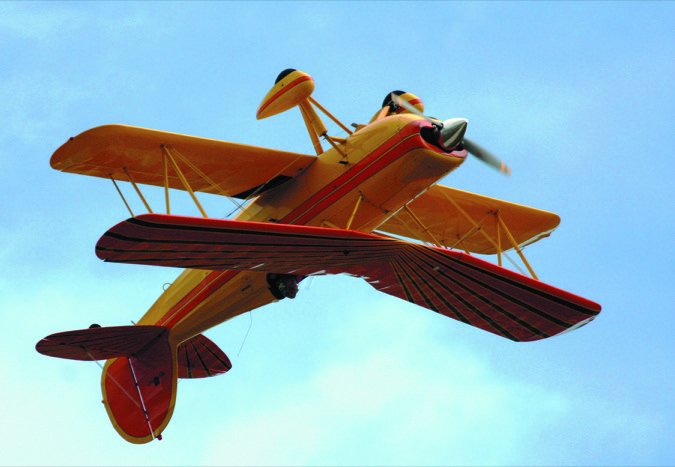
The 1929 Great Lakes Sport Trainer went out of production during the Depression but was resurrected with a horizontally opposed engine in the 1970s. It is now built by Waco Aircraft of Battle Creek, Michigan. New prices start at $265,000.
It’s a two-place, tandem, open-cockpit biplane with a 180-HP Lycoming turning a constant-speed prop. It is not a fast airplane-cruise ranges between 100 and 110 knots, depending on whom you believe. It can get chilly in the winter, yet we know a few folks who only want to fly airplanes open to the breeze when traveling.
With an inverted fuel and oil system, the Great Lakes is often compared to the 7KCAB Citabria in handling and performance, although the Lakes is lighter in roll. The swept upper wing gives it a sharp, clean entry and exit to snap rolls and spins.
Ground handling is demanding as three-point visibility is poor.
We found prices all over the place for the line-from $50,000 up-and largely dependent on condition of the fabric (recovering four wings is expensive) and engine.
Pitts Special
While there were a few production single-place Pitts Specials, we looked at the two-place S2 line. The S2-A has a 200-HP engine while a 260-HP Lycoming powers the S-2B and S-2C.
All have impressive vertical ability and such responsive controls that akro seemingly only demands that the pilot think about a maneuver to perform it.
The airplanes require training to land successfully because they go where the pilot demands, immediately, and it seemingly takes a while for most pilots to decide where they want the airplane to go. It is blind in three-point attitude and we’ve noted that most Pitts pilots fly final in a forward slip so that they can see the runway.
On a prebuy exam look for slop in the control system as bearings wear out and make sure inspection holes have been cut in the underside of the wings-that indicates the owner has probably been looking at the structure.
Look to see that the nose bowl and spinner line up. If not, the engine mounts are probably worn out and the alternator can be pushed into the nose bowl and the exhaust can hit the front of the firewall.
Cruise speeds are on the order of 150 knots, but there is little space for baggage and there’s no heater. Nevertheless, we like it for weekend trips. Prices for the S2-A range from $60,000 to $70,000, with the S2-B starting as low as $60,000 and going into six figures. The S2-C starts at $80,000 and goes up.
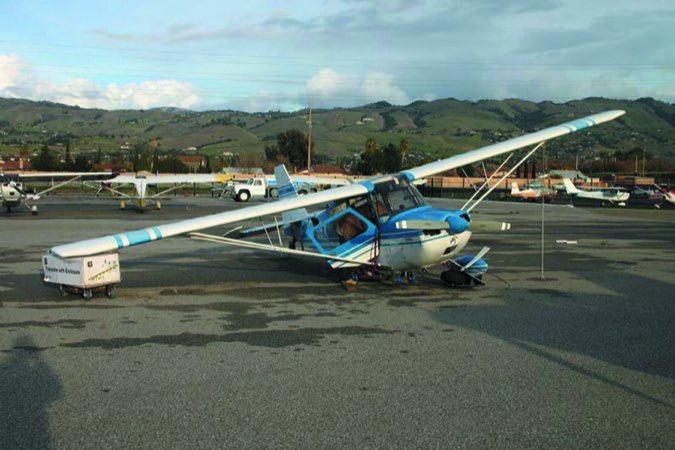
In talking with insurance agents about insuring aerobatic aircraft we learned that the rates tend to be similar to insuring high-performance cars. If you want a 700+HP Dodge Hellcat, plan on paying through the nose. If you’re driving a used Miata that will scoot along nicely and corner as if it’s on rails, the premium isn’t going to cause nosebleed. If you are buying a Pitts Special, plan on writing a pretty big insurance check; if your acquisition is a Citabria, Decathlon or Cessna Aerobat, the fact that the airplane is aerobatic isn’t going to bump the premium noticeably.
We’ve found that aircraft insurance rates track accident rates pretty closely-insurance underwriters track accidents carefully because they’ve got to accurately analyze risk or they’re going to be out of a job when their company rolls inverted and pulls.
For this article we went into NTSB reports and tracked the 100 most recent accidents (except for the Great Lakes where we only found 87). We were looking for red flags for prospective owners.
After burying ourselves in bent airplane numbers we came to a few conclusions. First, even with aerobatics involved, the highest risk of tearing up your airplane is on landing, particularly loss of control during rollout (runway loss of control-RLOC). If you’re flying a tailwheel airplane your risk of RLOC is two to three times what it is for a nosewheel airplane even though tailwheel pilots possess the magic macho mojo of aviation. They still wreck airplanes on landing at something over twice the rate of nosewheel pilots.
The second conclusion is that doing aerobatics isn’t a terribly high-risk endeavor unless you start down low, then it is a very risky undertaking-pun intended. Once some pilots get into an aerobatic airplane we can’t help but think that a switch flips somewhere in the primitive recesses of the brain that causes too many of them to go into “Hold my beer and watch this!” mode. Stupid pilot tricks looked to us to make up on the order of 10%-25% of the accidents we surveyed.
With that as general background, here’s our take on accidents on some of the aerobatic airplanes on the used market.
• Cessna 150/152 Aerobat
There were 16 Aerobat accidents, most of which were fatal, involving low flight. A few pilots hit obstructions while making a low pass, but most were stalling in a pull up from a low pass or doing aerobatics at low altitude. One pilot was reported to have a habit of doing rolls shortly after takeoff. He tried it one too many times. Another decided to buzz his friends and do a roll. The nose dropped when the airplane was inverted and it impacted the ground with the wings vertical.
• Citabria/Decathlon
In our accident review, we lumped the Citabria and Decathlon together, largely because their similarities outweigh their differences. We’ve long considered the Citabria/Decathlon to be the standard by which tailwheel ground handling is measured. That was reflected in the fact that of the 100 most recent accidents, 30 involved RLOC, a fairly low rate for airplanes with the steering wheel on the back end.
Where our eyes were opened was the number of accidents related to pilots shutting off the “this may not be a good idea” part of their brains-25 out of 100. There were eight stall/spin accidents, all during what is euphemistically called “maneuvering” flight-read messing around down low. To top that, there were 18 crashes arising out of flying low in general-five doing aerobatics and tying the record for low flying; the rest were flying low and smacked into something. One person put two 11-year-olds in the back seat, then flew low and hit power lines, killing everyone.
• Aerobatic Musketeer and Bonanza
We found no accidents involving aerobatics, low flying or stalls while maneuvering in the aerobatic versions of the Musketeer and Bonanza. We also noted that their rate of RLOC was 25%, consistent with our observations about the good ground handling of both types.
• Great Lakes
We did not see evidence of significant pilot foolishness in Great Lakes accidents. What we did see was that we’ll over half of the accidents were RLOC, partially, we think, due to poor visibility with the airplane in three-point configuration. That was consistent with the more than 10 of 87 accidents also involving hitting something on final, on the ground, on rollout or taxiing into another airplane.
• Pitts Special
The good news is, of the 100 most recent Pitts wrecks, only 30 involved RLOC, the same as the Citabria. The bad news is that 12 pilots ran their airplanes out of fuel; there were eight inflight and six on-the-ground collisions-probably due to poor visibility-and four crashed after stalling at low altitude.
The further bad news was seven pilots died trying to do low-altitude aerobatics and six spun in after appearing to start plenty high. Half of those aircraft were loaded out of CG aft and over gross. Significantly, there were four structural failure events; only one was fatal.
Conclusion
We like traveling in little airplanes that can be maintained at any shop in the country. We purely enjoy de-stressing after a rough day at work by caging our eyeballs with 30 minutes of akro.
To be able to do both in the same airplane is, to us, the definition of an all-purpose flying machine.

